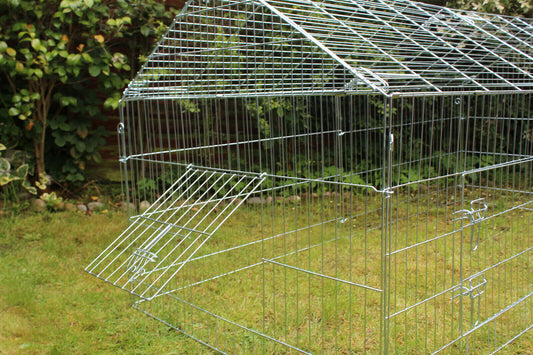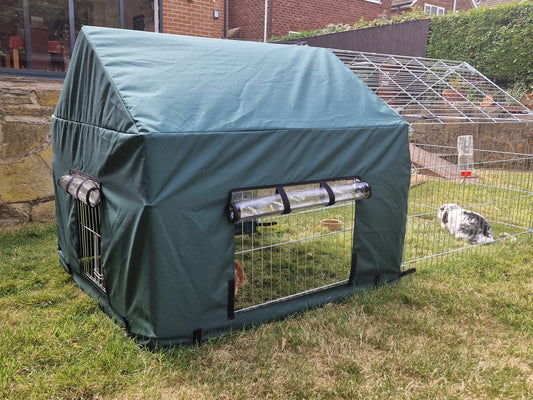Training your dog is not only important, it can be lots of fun too. After mastering the basics of ‘sit’ and ‘wait’ – which are crucial skills to keep your dog safe when you are out and about – you can start on some more impressive tricks. As well as showing off to your friends and family, learning tricks will teach your pet how to focus and follow instructions. Also, it’s a great way to strengthen the bond between the two of you.
Positive, reward-based techniques have replaced the outdated and unkind methods of the past so you should never use choke chains or punishment with your pet. With a supply of tasty dog treats, and lots of praise and encouragement, your dog will look forward to training time and achieve great results.
Don’t believe the popular adage – you can, in fact, teach an old dog new tricks. With a gentle and patient approach – and the right incentives for your individual dog – there is no age limit to learning.
You can teach your dog to high five by following these step-by-step instructions:
Step one
Find out what motivates your dog. Once you know what they’ll do anything for, training should be a breeze. It could be small morsels of chicken, cheese or sausage, or shop-bought training dog treats. Whatever works, make sure you have a plentiful supply ready for your first training session.
It is worth noting that if your dog is going to be getting through lots of high calorie dog treats it’s a good idea to decrease their meal portions slightly to ensure that they do not start putting on too much weight. Little and often is key with training dog treats so give things that are tiny but delicious. If your dog gets too full up on large dog treats at the beginning of your training sessions, they may not be so bothered about continuing!
Step two
Choose the right time and conditions to start. Your dog will usually let you know when they are ready for action with behaviour such as performing a play bow (stretching out their front legs in front of them while keeping their bottom in the air) or being generally bouncy or playful. This time tends to be after waking from a nap or an hour or two after eating.
Dogs are crepuscular animals, which means that they are at their most active during dawn and dusk, when their ancestors would have been out hunting. Between 4pm and 9pm you might find your dog has a sudden burst of energy so this is good time to harness that for training.
Find a quiet area of the house or garden where your pet is unlikely to be distracted. Once your pet learns to focus on you, you can move your training sessions to increasingly busier areas.
Step three
With your dog sitting in front of you, put a dog treat in your closed fist and hold it out to your pet so that they can sniff it. If you don’t release the dog treat from your fist, your dog will try to work out how to get it. This is likely to start with them licking your hand, then they will progress to using their paws.
Step four
When your dog’s paw makes contact with your hand, immediately say ‘yes’ or ‘good’ and give them the dog treat. Repeat this process until your dog is reliably touching your closed fist every time you offer it to them. This will tell you that your dog has successfully made a positive association between the action and the reward, knowing that by touching your fist they will receive a dog treat.
Step five
Once your dog has mastered step four, start holding out an empty fist and when your dog touches it, reward them immediately with a dog treat given from your other hand. Repeat this step until your dog is reliably touching your empty fist every time.
Step six
Continue with step five but gradually unfold your fist a little each time until your dog is reliably touching your open hand in exchange for a dog treat given from the other hand.
Step seven
By this stage, your dog will be reliably giving you their paw, however it’s not quite a high five. To achieve the final step, you will need to gradually move your hand a little higher each time so that your dog has to start reaching higher for your hand. Continue to say ‘yes’ or ‘good’ and reward with a dog treat from your other hand when they achieve it.
Step eight
Once your dog is giving you a proper high five every time, you can add a command name. If you say ‘high five’ just before holding up your hand and continue to say ‘yes’ or ‘good’ and rewarding after the action, your dog will begin to associate the command word with the action. With a bit of practice, your dog will have their paw up as soon as you say ‘high five’.
Top training tips
Once you’ve mastered the high five, don’t stop! There are so many more tricks you can teach your dog, from rolling over and weaving through your legs to doggie dancing or even riding a skateboard. Whatever you try next, remember these important top training tips to keep it fun:
- When you start teaching something new, find a quiet spot to minimise distractions for those all-important first steps
- Keep training sessions short so that your dog doesn’t become overwhelmed
- Don’t choose a time to train when your dog is tired or has just eaten
- Be consistent. It is so easy for a dog to become confused if you’re giving out mixed messages
- If things aren’t going well, take a break and try another day. If you or your pet are getting frustrated it will stop being fun
- Always end a training session with something your dog already knows. That way you can ensure you end on a positive note.









